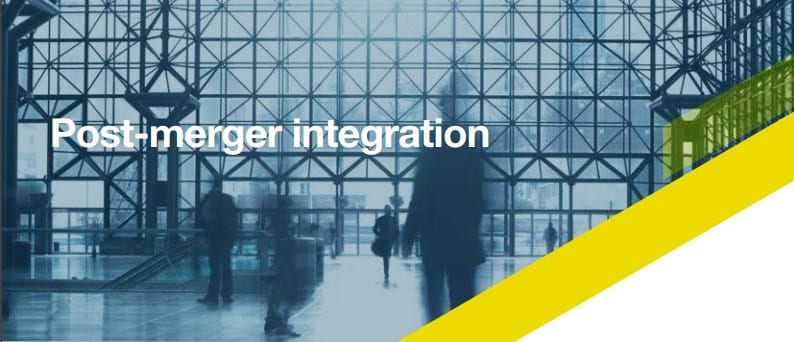To download the PDF version of this report, please click here.
Megadeal activity is robust, but dealmakers working at the top end of the market face unique challenges, both in getting deals over the line and after the close. What are these challenges and how should they be approached?
Last year, there were 39 mega deals globally (deals with transaction value above US$10 billion), the second-highest number of such deals since the financial crisis. The only year which exceeded this figure, 2015, was also the best performing year for M&A value on Mergermarket record. That year, there were 65 mega deals, totaling US$1.8 trillion.
An environment of persistently low-interest rates and readily available financing, combined with relatively slow organic growth, are among the factors pushing corporates to consider mega deals. “Small deals don’t tend to move the needle much in terms of immediate improvement in performance. If you have a board, a CEO, a group of shareholders or activist investors that are frustrated with the slow pace of organic growth, you end up seeing them do larger deals,” said Scott Moeller, director of the M&A Research Centre at Cass Business School.
While the first quarter of the year has seen a dip in M&A activity globally, year to date (up to 20/05/2019) there have been 16 deals worth more than US$10 billion, totaling US$535.3 billion in deal value. This is below the 26 deals worth US$673.3 billion recorded in the same period last year, but with the macroeconomic environment more positive than analysts predicted at the close of last year, financing conditions are still relatively benign and we could be on track to match last year’s totals.
Larger deals can mean greater complexity—in the preparation phase, in the M&A, as well as post-close. Competition issues, post-merger integration of people, processes, and infrastructure are all factors that must be taken into consideration.
With this in mind, we asked five experts in M&A from the fields of investment banking, technology and academia to weigh in on trends in mega-deal activity and the challenges facing dealmakers at the top end of the market.
Motives and challenges: Strategic buyers
Expert speakers
- Emmanuel Hasbanian – Co-Head of Corporate Finance – France, Deutsche Bank
- Matteo Canonaco – Co-Founder, Canson Capital Partners
- Scott Moeller- Professor and Director, M&A Research Centre Cass Business School
- Sean Kelly – Group Sales & Business Development Director, Imprima (Virtual Data Rooms provider)
- Tom Horsman – Head of Technology, Imprima (Virtual Data Rooms provider)
In the past five years, the M&A market globally has been exceptionally robust, breaking records for volume and value. Activity has been especially strong at the top end of the market, with valuations rising higher and higher.
Mergermarket: What are the main factors pushing M&A towards larger deals?
Scott Moeller, Cass Business School: Historically, the reason companies do large deals is that they are seeking to be transformative in their industry. Small deals don’t tend to move the needle much in terms of immediate improvement in performance. If you have a board, a CEO, a group of shareholders, or activist investors that are frustrated with the slow pace of organic growth, you end up seeing them do larger deals.
The other factor is that, ever since the Great Recession back in 2008 and 2009, companies have been more conservative with their balance sheets. There’s a lot more cash on balance sheets these days and that cash is probably not earning the return that many shareholders would like to see. One way to use that cash would be to go out and make a large acquisition.
Emmanuel Hasbanian, Deutsche Bank: I believe we are seeing large transactions due to a combination of factors. I would agree that in a slow-growth environment—though the situation is different in different sectors—the best way to find growth is to make accretive acquisitions.
Another factor is that we are in extraordinary times, with a lot of financing available at very favourable rates. On top of that, the equity markets have been quite bullish over the last few years, and many corporates have seen their stock value rise, giving them more ammunition to use on M&A. The usual limiting factor in deals, the lack of financing, is not there, for either debt or equity.
Finally, at the end of the day, it’s a lot of work to acquire companies—to identify companies, to secure financing, to diligence the assets, to structure the deal, etc.—but that is the work you have to perform anyway, no matter how large the target is. This would take more time or be more complex with a large company, but in essence the steps are the same. Obviously, the post-merger integration for a very large target is a lot more difficult, but in terms of the M&A work, the difference should not be a deterrent. The risks are also different, obviously: acquiring the ‘wrong’ company is definitely less of an issue when it is small as opposed to a merger of equal size, for instance. But if you have the resources, if the market is supportive, if there are large targets available, and if you are comfortable that the deal would make strategic, financial, and social sense, why wouldn’t you consider it? It is all about being diligent and thorough. And that has to be true in all situations, no matter how large the target.

Mergermarket: When it comes to mega deals, how do bidders source targets? Are they generally companies already known to them? And how and when do advisors come in?
Emmanuel Hasbanian, Deutsche Bank: Whether large or small, there are two kinds of acquisitions. You have acquisitions that directly fit with the acquirer’s core activities and then you have diversification stories. When it comes to their core markets, there is no need for us to come up with the one clever idea because if a potential target is of significant size, it’s very likely that the client would know it inside out much better than we could. Instead, in these types of acquisitions, investment banks play a critical role in helping the client structure, negotiate and execute the acquisition in the best possible fashion.
In the second example, where we are talking about adjacent areas, I think the banks can play a critical role in identifying the target. Also, banks that have a good understanding of the capital markets can help not just with the strategic aspect of acquisition but also with advising on how the market would respond. When you acquire something that is in a new market, you don’t want to take your own shareholders off-guard, and you want the reaction to be positive.
Finally, there is the financing. Working with a global powerhouse adds a lot of value to clients, thanks to the equity capital market and debt capital market capabilities, as well as the global reach in terms of industry coverage, for instance.
Matteo Canonaco, Canson Capital Partners: This is generally a big difference between corporate buyers and financial sponsors. For corporates, targets are generally very well known. They typically will have been courting each other for years and the bankers get called in for two principal reasons: the first is with corporates that don’t do acquisitions every day and therefore need advice structuring the deal; the other reason is just financing.
When it comes to financial sponsors, they are always hunting for the next interesting and different deal that is not on everybody’s radar. I think that the role of the advisor should be to scout out interesting situations. Last year, we helped Blackstone acquire Refinitiv for US$20 billion, the largest PE transaction in 10 years. That was an asset that we had been following for several years and we had insights that helped Blackstone approach the counterparty, structure, and execute a transaction that turned out to be a win-win.

Private equity groups are sitting on over US$1 trillion in capital. With so much dry powder and ready access to cheap financing, many financial sponsors are chasing larger and larger deals
Mergermarket: With historic levels of dry powder, do you expect PEs to increasingly take part in mega deals? And will these mainly be club deals?
Emmanuel Hasbanian, Deutsche Bank: We have seen, and I believe we will continue to see, very large transactions involving private equity players. PE firms have plenty of capital and the size of the target is less and less of an issue. New entrants are another factor changing the market. Long-term capital providers—I’m thinking about the Canadian pension funds, or Sovereign Wealth Funds, for instance—are more and more active in the market. They provide capital to the big private equity players but can also co-invest in their deals, or front deals directly themselves. Those players were not acting in the exact same way 10 or 15 years ago.
Matteo Canonaco, Canson Capital Partners: The deals would be possibly a bit bigger than what we’ve seen so far since larger funds are being raised. However, the type of mega-deals that we saw in the run-up to the financial crisis in 2006 and 2007, where a lot of firms were teaming up—might be less common. People learned in the financial crisis that when things go well, the consortium works, but as soon as there’s an issue, all of a sudden people have different agendas. That’s what limits the size of transactions. That, the sizes of their fund and the need for diversification within the fund. But, given the larger funds being raised, there is no reason why we shouldn’t see US$25–30 billion deals take place.
Mergermarket: When PEs invest, they have to consider their exit routes. With larger and larger deals, could that be a challenge? Will we be seeing more IPOs?
Emmanuel Hasbanian, Deutsche Bank: This is one critical area. Every private equity player looking at a potential investment has to ask themselves, ‘How do I exit?’ as part of the initial considerations. Obviously, the bigger the asset, the fewer exit routes you have, and IPOs would almost always be considered then. But the key question is then: will the public markets be open? Nobody knows. One alternative for PE firms willing to exit a very large company if public markets are challenging could be to reduce the complexity of the target by selling divisions. Some people call it a breakup, but breakups are not necessarily negative—you may just be creating smaller, more agile champions.
Matteo Canonaco, Canson Capital Partners: There is no doubt that when you’re looking at much larger PE deals, IPOs become much more prominent. But, as we have seen, there are also companies that buy large companies. It may be that, at the time a company was being sold to a PE firm, the natural bidder for that particular business was otherwise occupied and did not have the ability to execute the transaction for one reason or another. I think that we will see both exit routes for mega deals: IPOs and trade sales. We may see less of the secondary buyouts that are the bread and butter of exits in the middle market.

Merger control and competition issues remain at the forefront of challenges to mega deal activity, but rising populism and protectionism are also growing to be headaches for dealmakers.
Mergermarket: What are the biggest challenges to getting a mega deal over the line?
Scott Moeller, Cass Business School: Any time you’re doing a deal that could be considered a mega deal, it is going to attract the attention of competition authorities around the world. Therefore, very early on, you want to get expert advice, because uncertainty adds costs, drives the timeframe out further, and creates a greater risk of the deal being unsuccessful.
Tom Horsman, Imprima: As Scott has already mentioned, the increased oversight that competition authorities give mega deals poses a real challenge. Also, another unique challenge when trying to complete mega deals concerns the huge volume and location of data that needs to be uploaded, hosted, and securely shared within the data room. This can involve hundreds of thousands of documents spread across geographically dispersed areas, incorporating large numbers of users and user groups.
Imprima has robust measures in place around infrastructure to ensure that our users have an optimal experience. We are acutely aware that, in order to facilitate the dynamic and fast-paced M&A process, we must follow the most efficient and streamlined procedures. These include features such as our industry-leading Q&A system, where potential bidders are asking questions that are routed over to the relevant parties on the sell-side.
There are two technical aspects to how we ensure large, complicated deals run seamlessly. The first part is ensuring that the performance and scalability of the infrastructure is optimal. Users need to rely on consistent performance, stability, and resilience no matter how large the volume of data, number of users, or the activities being performed. The second part of it is down to having intuitive, efficient workflows to streamline the process.
Sean Kelly, Imprima: You also need to consider that, on a large transaction, some deal managers are being hit with between 50 and 200 questions a day. They may have committed to answering all questions within 48 hours. If you don’t use a secure VDR platform that has the full flexibility to match your Q&A process—with tailored and varied workflows—it will make it a very difficult process to manage.
Last year, Imprima introduced some new features around automatically forwarding questions from the buy-side directly to the experts, whereas in the past hundreds of questions were being sent to the deal manager, creating a real bottleneck.
With our new system, questions are given relevant topics and are automatically routed over to the relevant expert to answer, saving considerable time at critical points in the DD process.
Matteo Canonaco, Canson Capital Partners: Merger control/competition is of course a major concern because it goes to certainty. You put a deal together and it can go through two years’ worth of merger control. There can be a backlash as well if a transaction doesn’t close because of competition issues. The judgment of the management teams involved is questioned. Look at the Walmart-Asda situation with Sainsbury.
And there are all sorts of social issues, such as implications for the workforce, which have to be considered—particularly now that the political landscape has changed quite a bit, with the rise of populism across the world, from the States to Europe.
Mergermarket: How are merger control regimes evolving across different parts of the world? Is it becoming more difficult to get through merger review processes?
Scott Moeller, Cass Business School: I wouldn’t say that competition regulators are becoming stricter, but I would say that the competition and merger control process is becoming politicised in a way that it wasn’t before. In the past, in many countries, it was solely an issue of market share, whereas now protectionism is creeping into the competitive review process. This has been a trend for the last 10 or 15 years but has become even stronger in the last several years.
Historically, aside from the competition authorities, there were bodies like CFIUS in the US, which review transactions involving foreign investment for national security risks. Now, politicians are also attempting to influence competition authorities who ought to be looking at things strictly on an economic basis.
Emmanuel Hasbanian, Deutsche Bank: I think that the complexity of global mega transactions has increased over the years. Over the 25 years of my career so far, corporates have become smarter in the way they structure themselves and countries have become smarter in the way they regulate their corporate finance markets. Therefore, the complexity of the transactions has increased dramatically. It’s more critical than ever to work with the right advisors—not just banks, by the way, but lawyers too—who have international clout, deal experience, and can help clients navigate through these issues.

Once a merger has closed, the process of integration can begin. This is where synergies and the rationale for the deal can be proved—or fall through. Issues such as differences in processes, culture, and technological infrastructure can pose a serious challenge, and acquirers should prepare to mitigate these challenges as early as they can.
Mergermarket: What are the common challenges when it comes to post-merger integration?
Matteo Canonaco, Canson Capital Partners: Culture is very important. Particularly when there are significant differences between the cultures of the acquirer and the target, you may see value destruction as opposed to creation, because ultimately, whether we like it or not, all businesses are made of people.
A lot of times, particularly as transactions get larger, communication and leadership get diminished and diluted. Leadership can shape culture, but it has to be an evolution, not a revolution. I think this is where leadership teams shine or don’t. Communication, openness, and transparency are fundamental.
Scott Moeller, Cass Business School: There are several factors here. I agree that culture is very important. When we’re talking about mega deals, much of the organisation will remain and there’s going to be a significant amount of inertia in the target company. If you don’t have that, you risk losing a significant portion of synergies—both in terms of revenues and expenses—that was actually the rationale for the deal in the first place.
The second thing is to make sure that the money is in place. Even in an all-share deal, you need to have a significant amount of cash available for the integration. A great rule of thumb is that the integration process will probably cost 10- 15% of the headline value of the deal. Those integration costs will probably be spread out over a two- or three-year period. During this time, you’re not yet getting the synergies, but you have those significant costs.
Emmanuel Hasbanian, Deutsche Bank: The people and processes in an organisation are critical, so making sure that your people are compatible is important. How you diligence a company’s DNA is another question. With processes, buyers need to make sure that the two companies are able to integrate their processes well, or that they can change the processes of the target in a way that will not destroy value.
The earlier you can plan the integration the better, with the limitation that sometimes transactions can take a long time to close, and until you take full ownership, you don’t have access to details about the target (and you do not have the right, either, to get such details for obvious anti-trust reasons). My experience shows me that it is critical to have a taskforce in place planning ahead and being ready to effect or supervise the integration immediately after closing. Post-closing, they have to do so in a military fashion, because the first few days are the most important ones. You don’t want to let it slide and waste time. Otherwise, two parallel systems may develop.
Sean Kelly, Imprima: From a technological infrastructure perspective, many companies are still too focused on completing the transaction itself rather than paying sufficient attention to the postmerger integration of the systems of the newly combined entities. Even in mega deals, with increased complexity and regulatory hurdles to overcome, companies tend to worry solely about getting the SPA signed and the compliance archive of the VDR distributed via USB or DVD. However, a great benefit to buyers would be to retain the data within the data room structure of the data room, which could act as a key starting point for the crucial post-merger integration phase. For example, the integration phase could involve analysis of lots of employee data (which could be already contained within the VDR) such as salaries, job titles, benefits, etc., to create an HR alignment plan post-deal completion.
Tom Horsman, Imprima: There is obviously an inherent challenge if you’ve got two completely distinct IT infrastructures and systems, with lots of data hosted between multiple sites (both on-premise and cloud-based). It can be very challenging to try and manage the process around rationalising and integrating systems in geographically dispersed locations. Again, it comes back to having the data stored centrally in one secure location in order to start the PMI analysis and create subsequent action plans in a timely fashion.
Mergermarket: Do you think technology could help in this matter?
Matteo Canonaco, Canson Capital Partners: Yes, technology will help. There are tools being developed to analyse a lot more data and to help with data compliance, i.e. what data should and shouldn’t be retained. Once upon a time, this was a much more manual process, but now there are AI tools that can automate the analysis.
Scott Moeller, Cass Business School: AI will make the deal process more efficient. We have seen how virtual data rooms, which have been around for a long period of time, have changed the way that business is done. AI will enable further changes. For example, AI will be able to do things that lawyers in the past had to do, throughout the due diligence process. I think that will be BAU, business as usual, within a very short period of time.
Tom Horsman, Imprima: In large deals, there is obviously more data to sift through and review, both from the perspective of the buy- and sell-side. This leads to ever-increasing work for analysts and lawyers involved in data room preparation and due diligence (including vendor DD). At Imprima, we have undertaken extensive research into how best to alleviate this workload, in particular employing AI and machine learning. Where the traditional VDR (including Imprima’s own VDR) are geared towards secure data hosting, managing user access, facilitating the Q&A process, usage monitoring, etc., we are now expanding our offering to provide AI-based tools that automate the VDR preparation phase as well as the DD process itself. In fact, in July our first tool, Smart Review, has been released to select customers. It is a tool that will help our customers to find documents and search for issues (red flags) contained within (legal and other) documents—the result being dramatically reduced effort and much higher accuracy than could ever be achieved through traditional methods.
Sean Kelly, Imprima: In the case of larger transactions, the amount of data being uploaded and securely shared is still enormous, whereas in medium-sized transactions the lawyers and the advisors are much more structured and the amount of data uploaded is more manageable. On a smaller transaction, they have more time to sift through the data, whereas on larger transactions they don’t have that luxury with time. We think having data stored in a secure environment and leveraging AI will greatly enhance post-merger integration, saving corporations and their advisors time and money.

After several record-breaking years, the peak may have already passed. Nonetheless, high levels of available capital could mean that activity at the top end of the market will remain robust.
Mergermarket: The last few years have been awash with cheap financing. How do you view financing conditions at the moment and how do you expect them to develop going forward?
Matteo Canonaco, Canson Capital Partners: It really depends on interest rate cycles and what that does to liquidity. Will central banks start reining in the liquidity they’ve generated? Maybe, maybe not. At the same time, it’s important to note that the financing market can close up due to unexpected shocks. All of a sudden, things can dry up. We’ve seen it before: in 2006- 2007, it looked like there was no end to liquidity. And then, in July 2007, people started doubting what it was that banks had put on their balance sheets, and that created the credit crunch.
Emmanuel Hasbanian, Deutsche Bank: I’m very humble when it comes to making predictions and I have to humbly tell you that I’ve often been wrong in the past—I’m not the only one, by the way. However, I think that the market remains solid. Anybody you talk to will tell you that we are probably reaching a peak and that a recession is coming, but nobody knows what form it would take, where it is coming from, nor when it is going to kick off. Therefore, the safest route would always be to be well prepared, diligent, and thorough, as mentioned before. To that end, I’ve always advised boards and clients to carefully consider all potential scenarios. Obviously, downturns are one of the scenarios. I believe that we need to keep our eyes wide open and that our clients should continue doing their thorough due diligence, as they have in the past. Nobody has a crystal ball, nobody can predict the future, so it’s simply a matter of making informed decisions. We cannot just assume that everything is going to be rosy forever.
Mergermarket: Looking forward, do you see the top end of the markets staying active?
Matteo Canonaco, Canson Capital Partners: I think activity at the top end of the market will continue. I’m not going to call the end of the mega deal. At the World Economic Forum this year, some people were saying that there would be a recession in 2020. Two months later, the consensus seems to have shifted. There’s been a dip in M&A in Q1, but that might be because people were hearing that recession was coming. Now that the consensus has shifted, I think the M&A markets could start motoring on again in the second half of this year.
Scott Moeller, Cass Business School: For the past several years, people have been saying that this boom period has to come to an end, maybe in the next year or two, but not this year. But looking at the market, I still think there is quite a backlog going into the rest of this year. Going into the second half of the year, PE firms will have to chase deals and exit from companies, due to where they are in their investment cycle. There could be a trigger event, which could slow down activity for corporates, but I think that having private equity as an active player in the marketplace means there will be a minimum level of strong activity that will still take place.

About Imprima
Imprima is a leading Virtual Data Room provider, handling over $1 trillion-worth of transactions in over 160 countries.
Our clients include high-profile corporations, financial institutions, and advisors.
Whether it’s a complex M&A transaction, managing portfolios of assets, or completing a time-sensitive restructure, our innovative products enable secure and fast deal execution.
- Imprima Virtual Data Room (VDR) is a highly secure, fast and intuitive virtual data room that preserves the confidentiality of mission-critical documents and communications during any transaction.
- Imprima Asset Lifecycle Management (ALM) empowers you to organise, manage and track your assets in an efficient and cost-effective way, ensuring they are sale-ready at any given time.
- Imprima Smart Review is our new AI tool that increases the accuracy of contract review, whilst reducing both the time it takes to complete and human error.

- Mergermarket is an unparalleled, independent mergers & acquisitions (M&A) proprietary intelligence tool. Unlike any other service of its kind, Mergermarket provides a complete overview of the M&A market by offering both a forward-looking intelligence database and a historical deals database, achieving real revenues for Mergermarket clients.
- Acuris Studios, the events and publications arm of Acuris, offers a range of publishing, research and events services that enable clients to enhance their brand profile, and to develop new business opportunities with their target audience.







